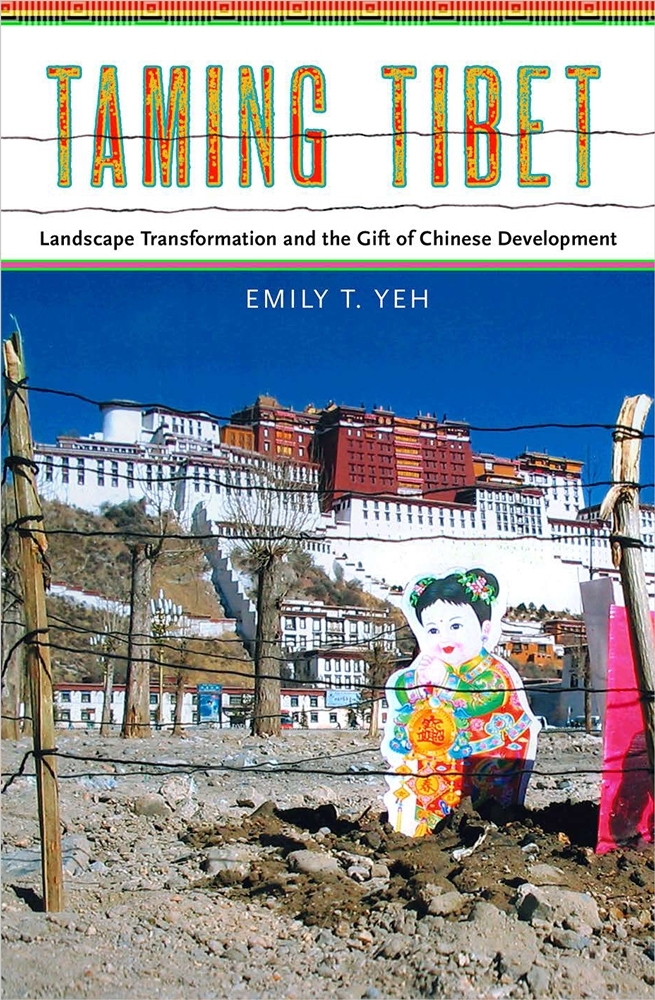
Published in November 2013 by Cornell University Press, “Taming Tibet: Landscape Transformation and the Gift of Chinese Development” is a study by scholar Emily T. Yeh which examines how Chinese development projects in Tibet served to consolidate state space and power.
Yeh draws on sixteen months of ethnographic fieldwork between 2000 and 2009 with a focus on Lhasa. From the book’s description:
The master narrative of the PRC stresses generosity: the state and Han migrants selflessly provide development to the supposedly backward Tibetans, raising the living standards of the Han’s “little brothers.” Arguing that development is in this context a form of “indebtedness engineering,” Yeh depicts development as a hegemonic project that simultaneously recruits Tibetans to participate in their own marginalization while entrapping them in gratitude to the Chinese state. The resulting transformations of the material landscape advance the project of state territorialization. Exploring the complexity of the Tibetan response to–and negotiations with–development, Taming Tibet focuses on three key aspects of China’s modernization: agrarian change, Chinese migration, and urbanization. Yeh presents a wealth of ethnographic data and suggests fresh approaches that illuminate the Tibet Question.
Buy the book on Amazon here: http://amzn.to/18XxJ2I





Dr. Emily Yeh currently serves as a professor of geography at the University of Colorado. In Taming Tibet 2013, she provides a critical analysis of China’s development approaches toward Tibet from 1950s to 2009, with a heavier focus on her field-research findings from 2000-2001. Using a combination of local narratives and on-site observation, her ethnography illustrates the contestation of power, control, violence and landscape reformation in Tibet.
The title word, taming, is well used in this circumstance. In Tibetan Buddhism, it is believed that Tibet lies on a gargantuan supine demons and it must be tamed. Yeh adapts this word to argue that China’s three stages of development initiatives in the 1950s, 1980s and 1990s were progressions to “tame” Tibet through spatial, economic and political control, yet China justified it as a “pure gift.”
In Taming Tibet, Emily Yeh’s examines how Chinese development projects in Tibet served to consolidate state space and power. Unlike most Western, Chinese or Tibetan writings, Yeh distanced herself from religion, therefore bypassing the dominating writing about Tibetan culture in relations to Buddhism. In contrast to the prevalent writing on the development in Tibet, which focuses heavily on quantitative or qualitative analysis, Yeh incorporates multiple accounts of personal narratives as evidence in her ethnography. Perhaps it is her intention to provide an ethnographic account representing the voices of the less heard. However, I find this insufficient to balance the overwhelming amount of personal narratives she incorporated, which is another deficiency. Although story-telling from her observation creates powerful images of the intensive dynamic between power, control and fear, her writing is simply overly descriptive, adopting multiple narratives in demonstrating the same arguments. The repetitive quotations from her informants are often lack of basic evidence and credibility. Comparable to many Western scholars, it is noticeable that Yeh positions herself with the Tibetans. She avoided directly accusing the CCP of the brutality but uses narratives of Tibetans to reflect it. Nonetheless, she failed to balance the positive impact Chinese development had on Tibet in a critical manner. Nevertheless, Yeh’s ethnographic work provides valuable insights in understanding China’s development approaches toward Tibet and it also amplifies the voices of ethnic Tibetan in China.
Thank you for this review!